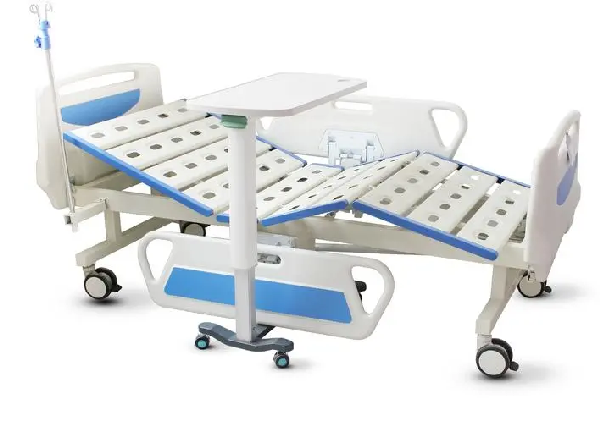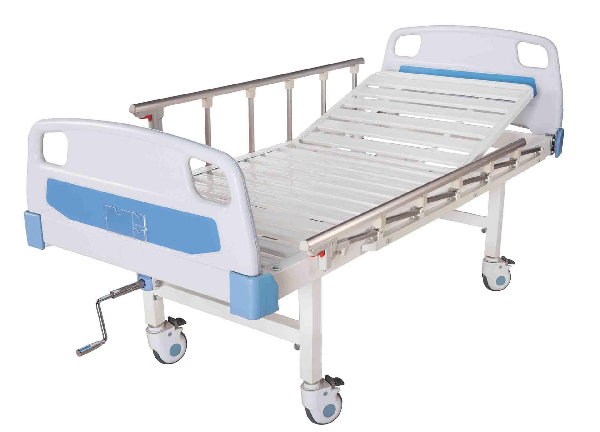Nursing beds are generally electric beds, divided into electric or manual nursing beds. They are designed based on the lifestyle habits and treatment needs of bedridden patients. They can be accompanied by family members, have multiple care functions and operation buttons, and use insulated and safe beds. For example, functions such as weight monitoring, nausea, regular turning over alarms, prevention of bedsores, negative pressure suction urine bed alarms, mobile transportation, rest, rehabilitation (passive movement, standing), infusion and medication management, and related prompts can all prevent patients from falling off the bed. Rehabilitation nursing beds can be used alone or in combination with treatment or rehabilitation equipment. The width of a flip type nursing bed generally does not exceed 90 centimeters, and it is a single bed that is convenient for medical observation and examination, as well as for family members to operate and use. Patients, severely disabled individuals, elderly people, and healthy individuals can use it for treatment, rehabilitation, and rest in hospitals or at home, with a variety of sizes and forms. An electric nursing bed consists of many parts. High configuration components include headboard, bed frame, bed tail, bed legs, bed board mattress, controller, two electric push rods, two left and right safety shields, four insulated silent casters, an integrated dining table, a detachable headboard equipment tray, a weight monitoring sensor, and two negative pressure urine suction alarms. The rehabilitation nursing bed has added a set of linear sliding table and drive control system, which can passively extend the upper and lower limbs. Nursing beds are mainly practical and simple. With the development of science and technology, the market has also developed electric nursing beds with voice and eye operations, which can facilitate the mental and daily life of blind and disabled people.

A safe and stable nursing bed. A regular nursing bed is designed for patients who are bedridden for a long time due to mobility issues. This places higher demands on the safety and stability of the bed. The user shall present the product registration certificate and production license of the Food and Drug Administration at the time of purchase. This ensures the medical care safety of the nursing bed. The functions of the nursing bed are as follows:
Back lifting function: Relieve back pressure, promote blood circulation, and meet the daily needs of patients
The function of lifting and lowering legs: promoting blood circulation in the patient’s legs, preventing leg muscle atrophy and joint stiffness
Flip over function: It is recommended for paralyzed and disabled patients to flip over every 1-2 hours to prevent pressure ulcer growth and relax the back. After turning over, nursing staff can assist in adjusting the side sleeping posture
Function of toilet aid: It can open the electric toilet bowl, use the function of lifting the back and bending the legs to achieve sitting and defecation of the human body, and facilitate patient cleaning
Hair washing and foot washing function: Remove the mattress at the head of the bed and insert it into a specialized shampoo basin for people with limited mobility. With the back lifting function at a certain angle, the hair washing function can be achieved, and the bed end can also be removed. With wheelchair function, foot washing is more convenient.
Post time: Jul-31-2024


